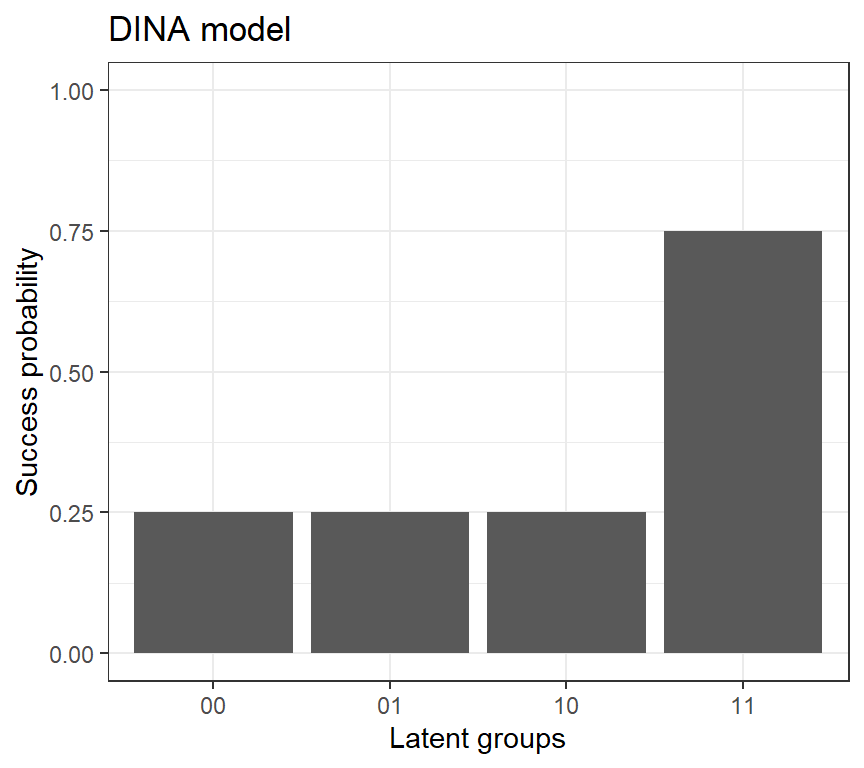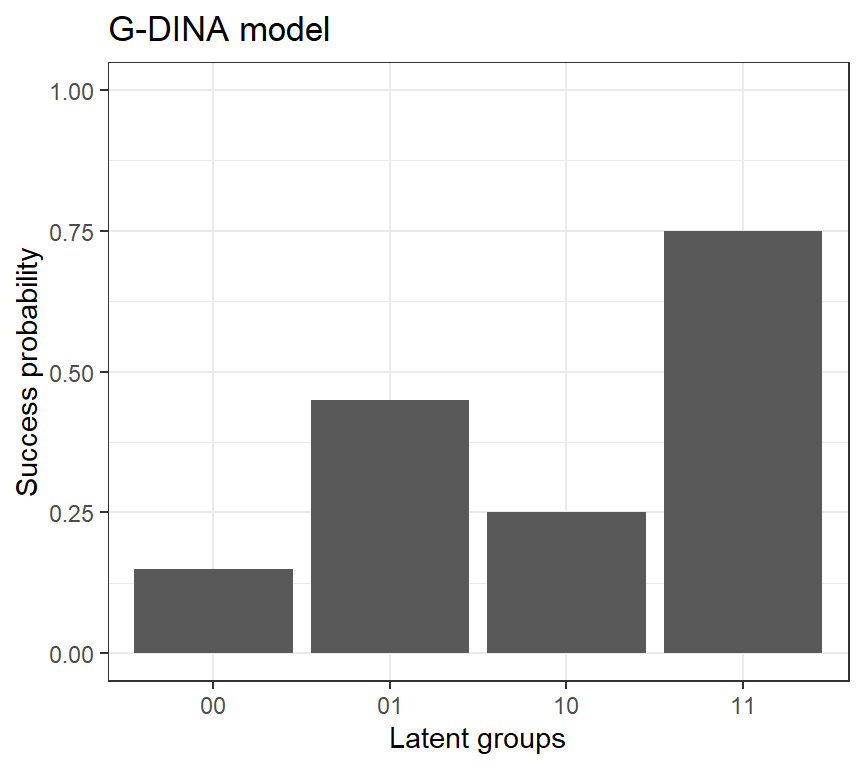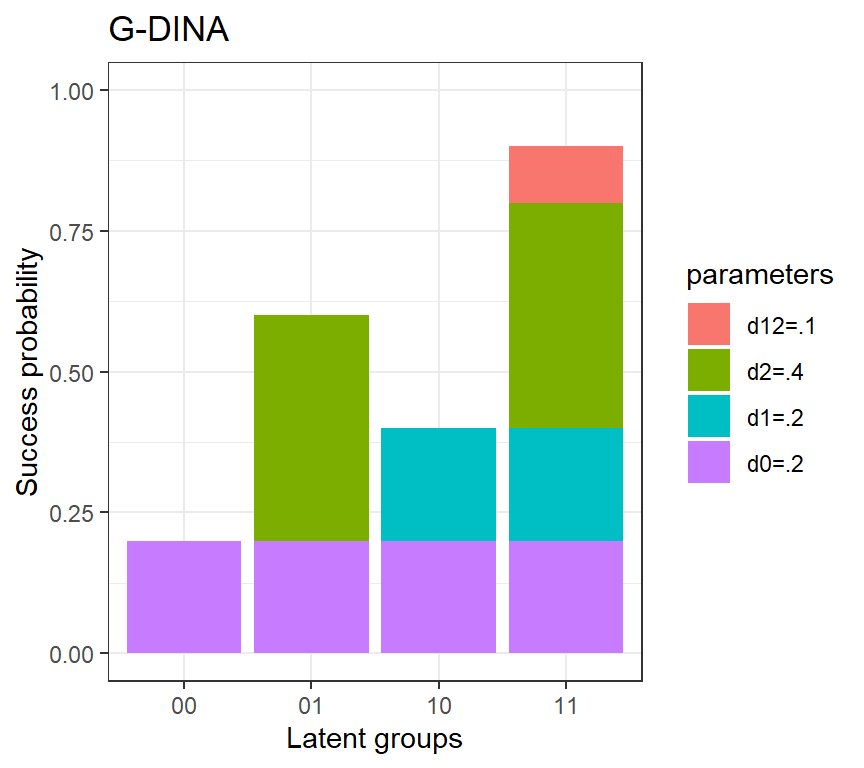3.9 The Generalized DINA model
The generalized DINA model, or G-DINA model, is a general model framework (de la Torre, 2011).
G-DINA model is often called a saturated model because it subsumes many existing CDMs 1
A revisit of the DINA model

A generalization

The IRF of the G-DINA model can be written by
: Although the above IRF of the G-DINA model is very simple, researchers often reparmeterize it in a different, but equivalent, way:
Based on this parameterization, which is often referred to as the identity link of the G-DINA model, please calculate the following probabilities of success:

References
Davier, M. (2008). A general diagnostic model applied to language testing data. British Journal of Mathematical and Statistical Psychology, 61(2), 287–307. https://doi.org/10.1348/000711007X193957
de la Torre, J. (2011). The generalized DINA model framework. Psychometrika, 76(2), 179–199. https://doi.org/10.1007/s11336-011-9207-7
Henson, R. A., Templin, J. L., & Willse, J. T. (2009). Defining a Family of Cognitive Diagnosis Models Using Log-Linear Models with Latent Variables. Psychometrika, 74(2), 191–210. https://doi.org/10.1007/s11336-008-9089-5
Another two saturated CDMs are loglinear CDM (Henson et al., 2009) and the general diagnostic model (Davier, 2008)↩︎